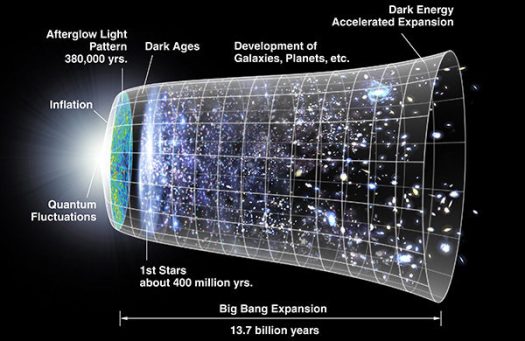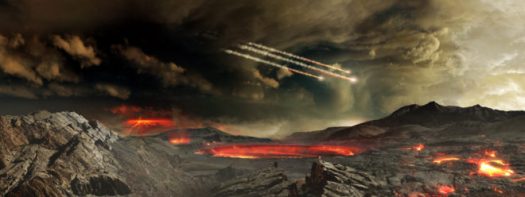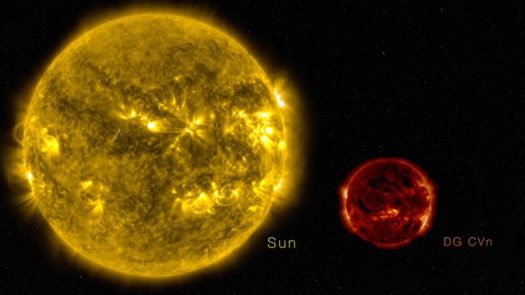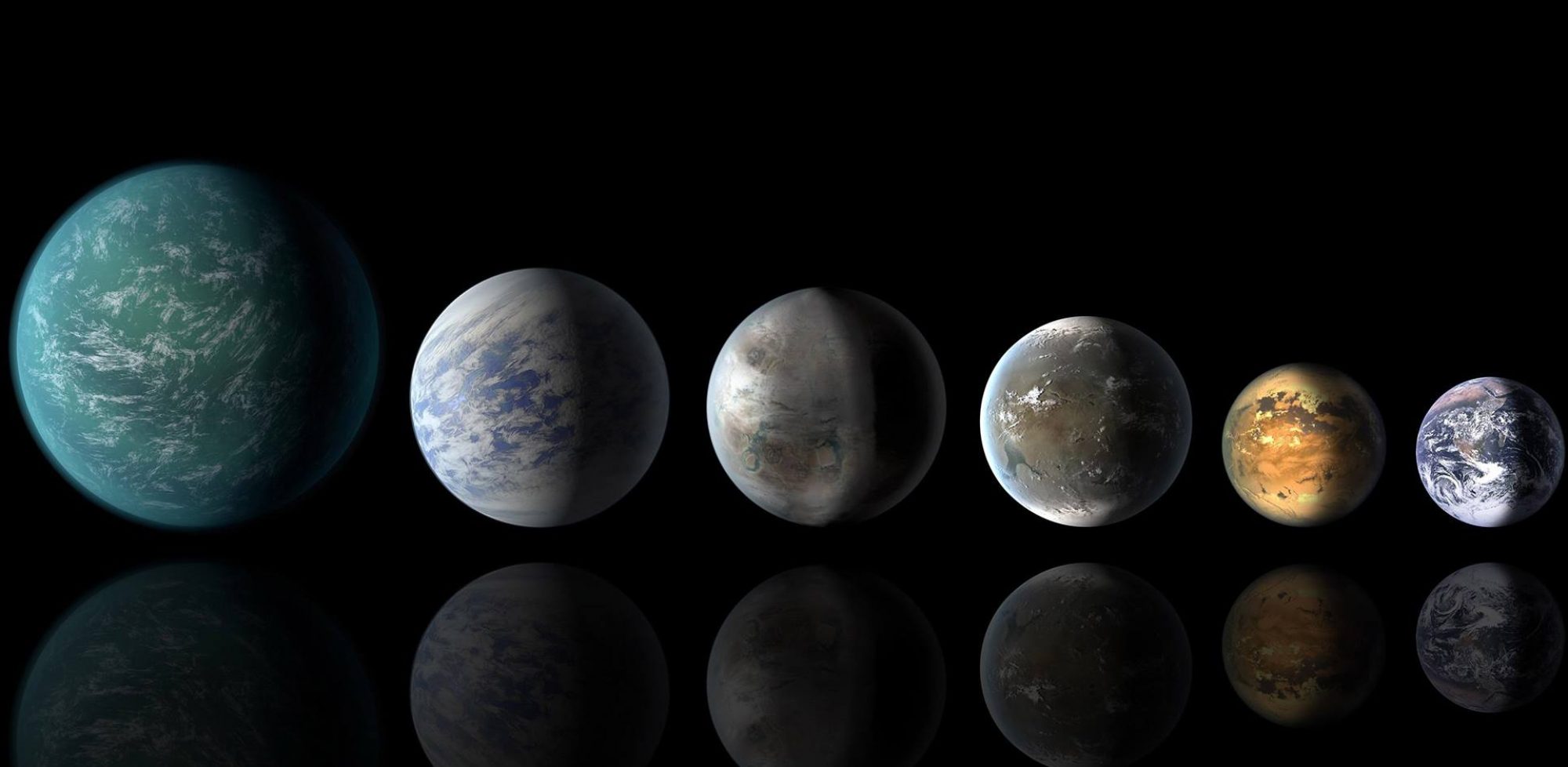
The study of the formation and logic of the universe (cosmology) and the study of exoplanets and their conduciveness to life do not seem to intersect much. Scientists in one field focus on the deep physics of the cosmos while the others search for the billions upon billions of planets out there and seek to unlock their secrets.
But astrophysicist and cosmologist Avi Loeb — a prolific writer about the early universe from his position at the Harvard-Smithsonian Center for Astrophysics– sees the two fields of study as inherently connected, and has set out to be a bridge between them. The result was a recent theoretical paper that sought to place the rise of life on Earth (and perhaps elsewhere) in cosmological terms.
His conclusion: The Earth may well be a very early example of a living biosphere, having blossomed well before life might be expected on most planets. And in theoretical and cosmological terms, there are good reasons to predict that life will be increasingly common in the universe as the eons pass.
By eons here, Loeb is thinking in terms that don’t generally get discussed in geological or even astronomical terms. The universe may be an ancient 13.7 billion years old, but Loeb sees a potentially brighter future for life not billions but trillions of years from now. Peak life in the universe, he says, may arrive several trillion years hence.
“We used the most conservative approaches to understanding the appearance of life in the universe, and our conclusion is that we are very early in the process and that it is likely to ramp up substantially in the future,” said Loeb, whose paper was published in the Journal of Cosmology and Astroparticle Physics.
“Given the factors we took into account, you could say that life on Earth is on the premature side.”

This most intriguing conclusion flows from the age of the universe, the generally understood epochs when stars and then planets and galaxies formed, and then how long it would take for a planet to cool off enough to form the chemical building blocks of life and then life itself. Given these factors, Loeb says, we’re early.
In the long term, the authors determined, the dominant factor in terms of which planets might become habitable proved to be the lifetime of stars. The higher a star’s mass, the shorter its lifetime. Stars larger than about three times the sun’s mass will burn out well before any possible life has time to evolve.
Our sun is a relatively large and bright star, which is why its lifetime will be relatively short in cosmological terms (all together, maybe 11 billion years, with 4.5 billion already gone.) But smaller stars, the “red dwarf,” low-mass variety, are both far more common in the universe and also much longer lived — as in trillions of years.
These smallest stars generally have less than 10 percent the mass of our sun, but they burn their fuel (hydrogen and helium) much more slowly than a larger star. Indeed, some may glow for 10 trillion years, Loeb says, giving ample time for life to emerge on any potentially habitable planets that orbit them. What’s more, there’s every reason to believe that the population of stars in the galaxy and cosmos will increase significantly, giving life ever more opportunity to commence.

As a result, the relative probability of life grows over time. In fact, chances of life are 1,000 times higher in the distant future than now.
This calculation, however, comes with a major caveat: Scientists are sharply divided about whether or not a star much smaller than ours can actually support life.
The potential obstacles are many — an insufficient amount of heat and energy emanating from the star unless the planet is close in, the fact that red dwarf stars have powerful, luminous beginnings that could send a nearby planet into a runaway greenhouse condition that might result in permanent sterilization, and that many planets around red dwarfs would be close to the stars and consequently tidally locked. That means that one side of the planet would always face the star and be light, while the other would continue in eternal darkness. This was earlier considered to be a pretty sure deterrent to life.
Recent theoretical analyses of planets around these red dwarfs, however, suggests that life could indeed emerge. It could potentially survive at the margins — where day turns into night and the temperatures would likely be stable– and also in other dayside regions were temperatures could be moderated by clouds and winds. But no observations have been made to substantiate the theory.
Because of their relatively cool temperatures and resulting low brightness, individual red dwarfs are nearly impossible to see with the naked eye from Earth. But they’re out there.
The nearest star to our sun, Proxima Centauri, is a red dwarf, as are twenty of the next thirty nearest stars. Data from the Kepler Space Telescope suggests that as many as 25 percent of red dwarfs have planets orbiting in their habitable zones — neither too hot nor too cold to keep liquid water from sometimes pooling on their surfaces.

“I think we can and we should test these theories in the years ahead with observations,” Loeb said. “We should be able to tell if nearby low-mass stars have life around them” in the decades ahead.
And if red dwarfs can support life, then the future for life in the universe is indeed grand.
The merging of cosmological theory and astronomical observation that Loeb has in mind would indeed be unusual, but it is nonetheless consistent with the interdisciplinary nature of much of the broader search for life beyond Earth. That effort has already brought together astrophysicists and geoscientists, astronomers and biologist. It’s just way too big for one discipline.
An interesting sidelight to Loeb’s argument that Earth may well be among the earliest planets where life appeared and continued is that it would provide a solution to the extraterrestrial life puzzle known as Fermi’s Paradox.
It was in 1950 that renowned physicist Enrico Fermi was talking with colleagues over lunch about the predicted existence of billions of still-to-be-discovered planets beyond our solar system, and the likelihood that many had planets around them. Fermi also was convinced that the logic of the vast numbers and of evolution made it certain that intelligent, technologically-advanced life existed on some of those planets.
It was an era of fascination with aliens, flying saucers and the like, but there actually were no confirmed reports of visitations by extraterrestrial life. Ever, it seemed.
If intelligent life is common in the universe, Fermi famously wondered, “Then where is everybody?”
There are many potential answers to the question, including, of course, that we are alone in the universe. The possibility that Earth might be among the very early planets with life has not been put forward before, but Loeb said that now it has been.

“Our view is that we’re at the very beginning of life in the universe, we’re just ramping up,” he said. “So of course we haven’t been visited by anything extraterrestrial.”
As a congenital thinker in the very long term, Loeb also raised the issue of whether it makes sense for human life to remain on Earth and in our solar system. The sun, after all, will run out of fuel in those remaining six billion years, will expand enormously as that occurs, and then will re-emerge as a super-dense white dwarf star. Any biology in our solar system would have been destroyed long before that.
But Proxima Centauri, one of those very long-lived stars?
“It will be there a very long time,” he said. “If the conditions are right, then maybe a time will come to migrate to any planets that might be around Proxima. It’s four light years away, so it would take generations of humans to get there. Certainly very difficult, but some day in the far future people may be faced with an alternative that’s considerably worse.”

Excellent work! as a die-hard trekkie, this idea that we [humans] are early never occurred to me. it’s a little disheartening though; i always like to think about advanced civilizations out there in the galaxy (indeed the cosmos) somewhere who have figured out how to live like humans on earth in gene roddenberry’s vision of our future in star trek. So to think we are the most advanced civilization in the cosmos now is kind of depressing. but, something new for me to think about.
LikeLike
I like this idea. This could indeed be true in our galactic neighborhood. There might be other alien life, but they might be far away to contact us by any means.
So, in distant future, other species in other star system will look at us as the “Ancient” ones, that seeded life throughout the galaxy.
There might be myths/legends surrounding us and our creations.
LikeLike
One might wonder about the validity of this body of work due to the number of grammatical errors therein. Notwithstanding, the crux of this proposal has been debated before and shall remain mootable likely for eons hence.
LikeLike
I apologise for the caps. I’m not shouting, but The form refuses to allow me to change it!
It’s an interesting suggestion, but would it not violate the Principle of Mediocrity?
That is, if the vast majority of observers find themselves around a red dwarf in an old universe, and we find ourselves around a G dwarf in a young universe, then we are extremely unusual.
The Principle of Mediocrity isn’t a law of nature, of course – it may be that we have appeared extremely early – but generally we should favour explanations that make our observations typical.
If there are two populations, (A) a very small population in a young universe, and (B) a very large population in an old universe, then we would expect to find ourselves in population B. As we instead find ourselves in population A, the most likely explanation is that population B does not exist.
LikeLike
(Yes, the caps thing is odd) The principle of mediocrity is tricky. If you have no other information about the world than your immediate situation, then it suggests that the most likely assumption is that your situation is typical. But whenever you get some reason to adjust your prior beliefs, that principle gets weaker and weaker.
For example, since most of the world’s population lives in developing countries, the principle suggests that’s where I should find myself. Yet I don’t. However, when I get new prior information about the actual distribution of the population, I can say “Hey, that’s strange: I’m not as typical as I expected”. Since I have strong prior reason to believe in that larger population, the principle of mediocrity doesn’t give me much grounds to conclude it doesn’t exist.
So the question is: how much new information is really suggesting the Earth has developed life unusually early, and how strongly should we believe that information?
LikeLike